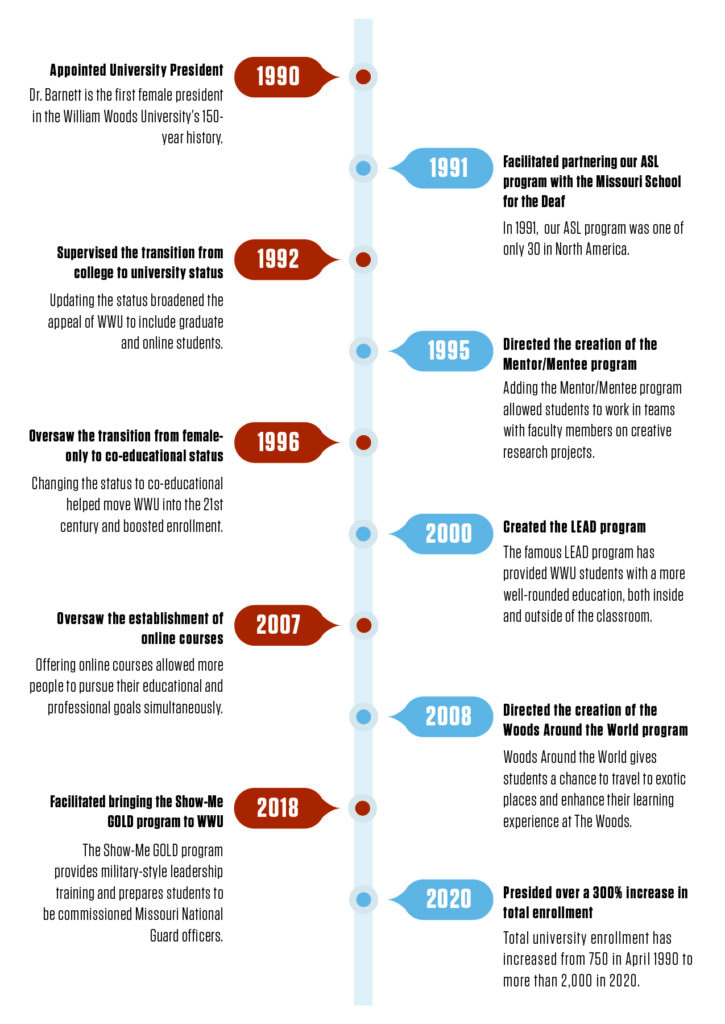Dr. Jahnae H. Barnett reflects on the 30th anniversary of her becoming WWU president
This story and many others were featured in the official 2020 William Woods University Alumni Magazine, The Woods. Click here to check out the digital version. https://issuu.com/socialmedia-williamwoods/docs/alumni_magazine_2020_final
In the 150-year history of William Woods University, few individuals, if any, have had a greater impact on the institution than Dr. Jahnae H. Barnett. From being the first female president in WWU history to being the longest-serving female president of a four-year college/university in Missouri history, and currently serving the second-longest active tenure of any four-year college or university president in the state, President Barnett’s leadership over the past quarter-century has revolutionized William Woods from a regional, liberal arts college to a coeducational university, offering paths from associate to bachelor’s, master’s and doctoral degrees.
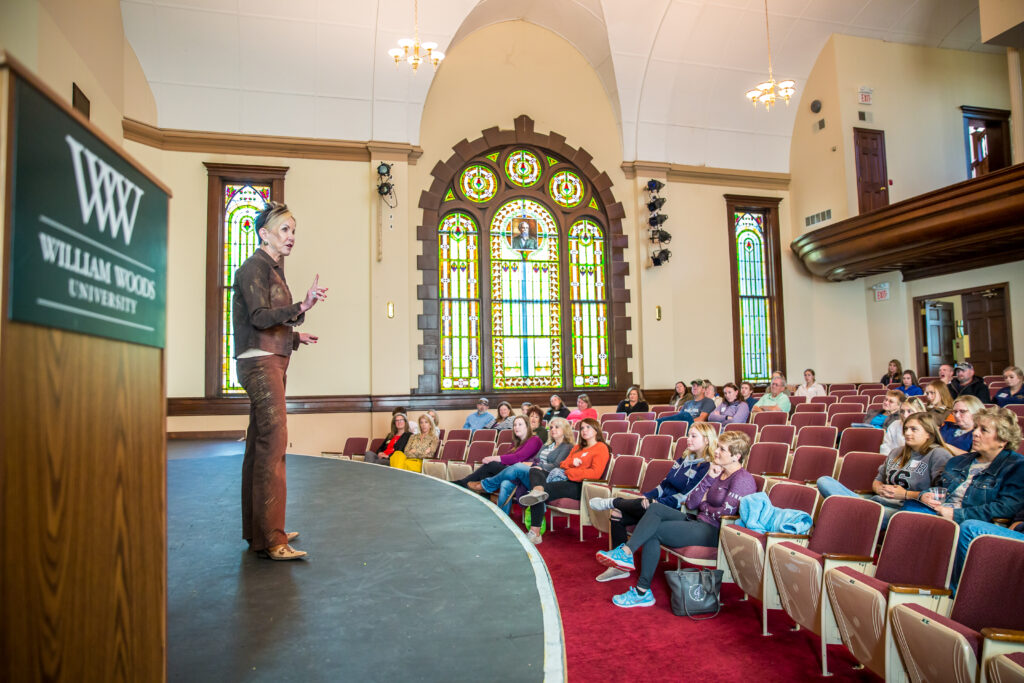
2020 marked the 30th anniversary of Dr. Barnett’s appointment as WWU President on April 21, 1990, a three-decade period in which she has guided the University through a generation of extraordinary change. Under her leadership, William Woods made the transitions to university (1993) and coeducational (1996) status; added graduate-level, online and study abroad programs; added a variety of out-of-class experiences to augment a student’s well-rounded education, including the Woods Around the World study-abroad program, and the Mentor/Mentee, Service Learning and LEAD co-curricular programs.
The success of President Barnett’s innovative leadership has been clearly illustrated by the numbers. Since she became President, William Woods University’s total enrollment has grown from 750 students to more than 2,200; the University’s endowment has increased by nearly 250 percent, from $5.7 million to nearly $20 million; the University eliminated its long-term debt and has maintained an operating budget in the black for 18 straight years; and infrastructure and capital improvements on the WWU main campus in Fulton have exploded.
On the occasion of her 30th year as President, and 47th year at WWU overall, Dr. Barnett provided some of her reflections on her distinguished tenure.
What goals and challenges have you seen WWU achieve and overcome under your leadership of 30 years?
“If the real William Woods could come back to life today, he simply would not recognize the college that bears his name.” This was the sentiment many of us shared during the planning of the 150th anniversary of William Woods University this past year. Dr. William Woods had vision. Little did he know just how far into the future his vision would extend. Building on humble beginnings of an educational institution for orphans of the Civil War, today, we are a modern, co-educational university offering paths from associate to bachelor’s, master’s and doctoral degrees, serving students from literally around the state, nation and world with a mix of on-campus, regional and online options. And the “look” of our campus has expanded profoundly since our beginnings as well, with infrastructure added like the Center for Human Performance, Kemper Center for the Arts, Rowland Applied Riding Arena, Firley Soccer Field, a new baseball/softball complex, Anderson Arena, four new sorority residence halls, and new apartment/residence hall complexes.
As much as I loved what was then William Woods College, when I first stepped foot on this campus in 1973, I am enamored equally with all the progress we have made – necessary progress– to continue to move our University forward.
After 17 years as a faculty and staff member, what motivated you to want to become President of William Woods back in 1990?
I started at William Woods as Chair of the Department of Business and Economics, and looked forward to a teaching career, which was my passion. Our President in the early 1980’s, Dr. John Bartholomy, sat me down on multiple occasions to talk about my future, which I had always assumed would be teaching. One day while meeting with him, he asked “If every position at this college was available, what would you really want to do?” I told him that I would want his job, to be President of William Woods! He laughed and asked me to aim a little lower!
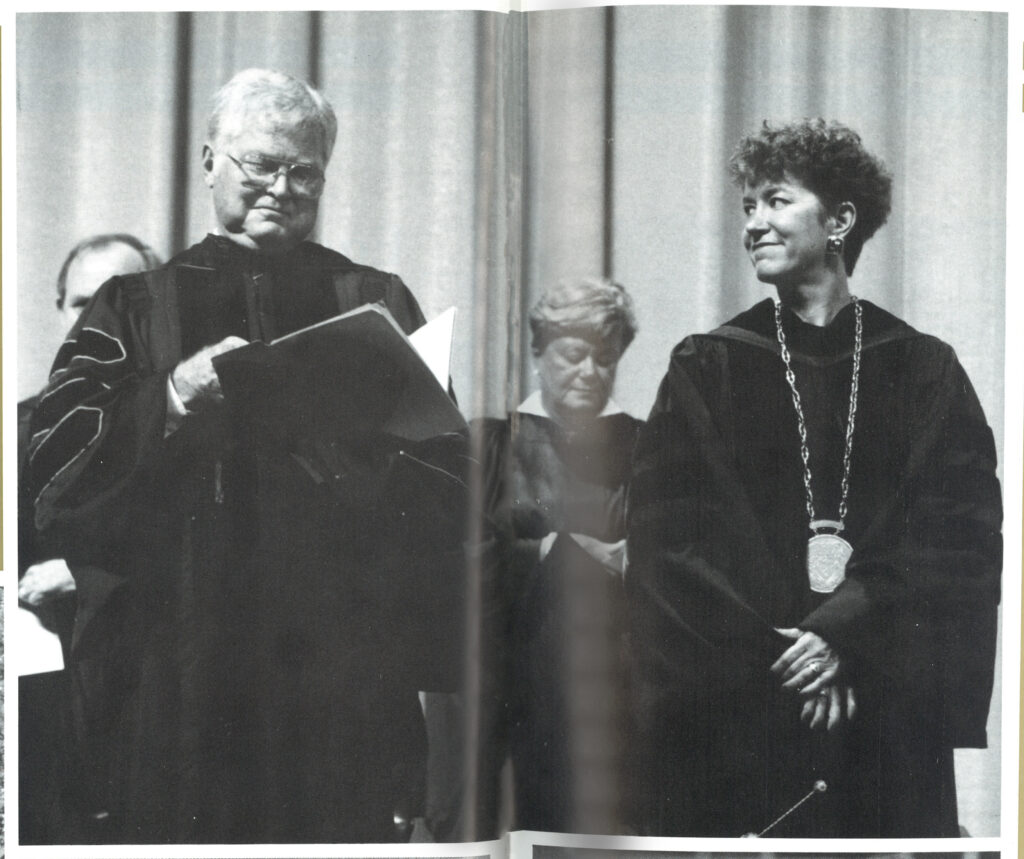
Later on, in 1990, I was serving as Vice-President of Admissions, Retention and Development when Dr. Bartholomy decided to retire. He called me into his office and said “You know that we are doing a national search for a new president. I have been reviewing applications – where is yours?” I had not even thought about applying for his job, or any other job, but that conversation motivated me to consider it. I went home and sifted through 17 years of papers to compile my accomplishments and contributions in the form of a suitable resume’, and I applied.
At the April 1990 Board of Trustees meeting, after interviewing multiple candidates, I was appointed President.
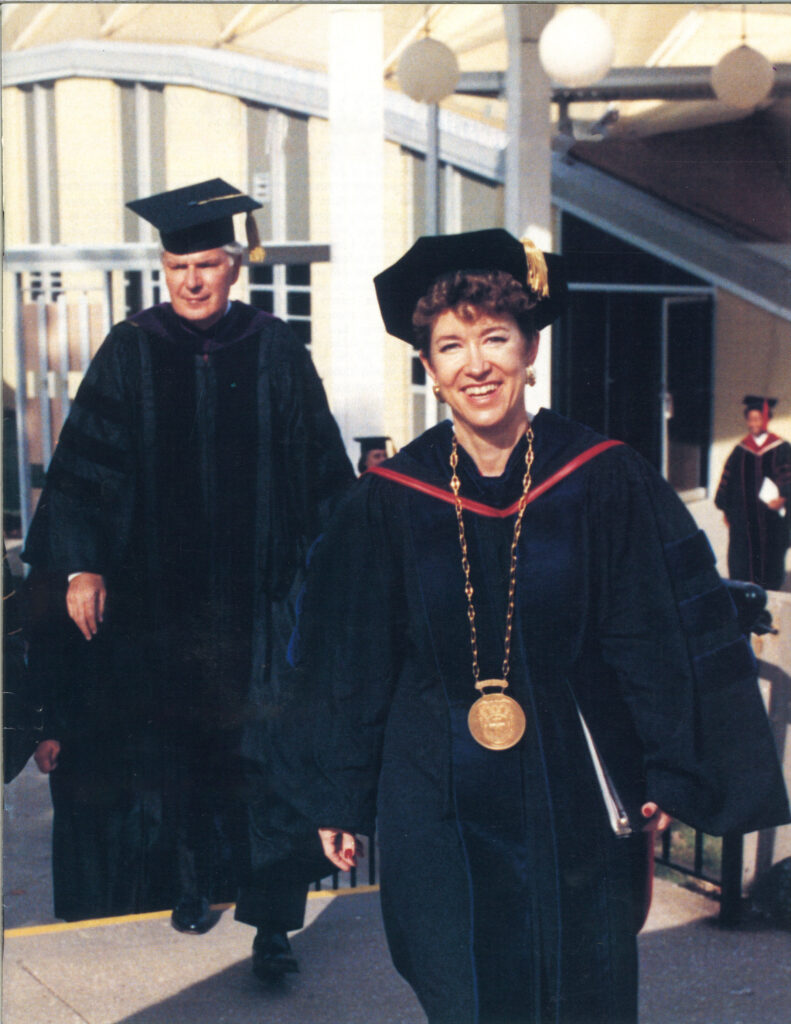
Education is evolving constantly. How do you keep pace with the changing needs and expectations of students?
The biggest joy from working in higher education, in my opinion, is the capacity to shape someone’s life significantly, especially during the highly formative years (ages 18-22), when an individual is making the transition from teen to adult.
We refer to William Woods as a “student-centered and professions-oriented university committed to the values of ethics, self-liberation, and lifelong education in the world community,” and I truly believe we have lived that on this campus over these last 30 years. So, I am most proud of the programs we have created, both inside and outside the classroom – like the LEAD program and Woods Around The World, for example, or online programs for working professionals, that truly have prepared generations of individuals into becoming successful, responsible, lifelong learners who are a credit to their professions, communities and families. To be able to say I played a role in shaping the lives of so many William Woods students is what has motivated me every day I have been on this campus since I came here in 1973.
What are the biggest challenges to thriving as a smaller, private university in today’s world of Higher Education, and how has WWU been able to adapt?
In the hyper-competitive world of Higher Education today, it is imperative that an institution offer a unique college experience that differentiates it from its competitors, so that it stands out and thrives among its peers. At William Woods, we do not strive to be like the big public universities, nor are we content merely to imitate other smaller, private institutions that some might consider similar to us. They are not. We elected to offer prospective students something different, both inside and outside the classroom, which is how we traditionally have been known here at William Woods. We are something different. We exist to provide a quality college education and unique academic experience in a number of ways (traditional residential undergraduate, graduate, online, commuter) in a smaller, intimate setting that allows our students to both learn from, and personally know, our outstanding faculty. The college experience we offer is different from other schools, accentuated by our strengths in niche academic disciplines like Equestrian Science (EQS), American Sign Language (ASL), and other specialized programs.
Where do you see William Woods University 30 years from now?
I see a University that continues to be on the cutting edge of providing a quality higher education, coupled with a unique overall college experience, that is attractive to a variety of motivated, intelligent and committed students. Every college has to accept the fact that what each person wants in a college experience is as different as the interests which bring them there- there is no “one size fits all” approach. Those who do not appreciate this reality may not even be here in 30 years!
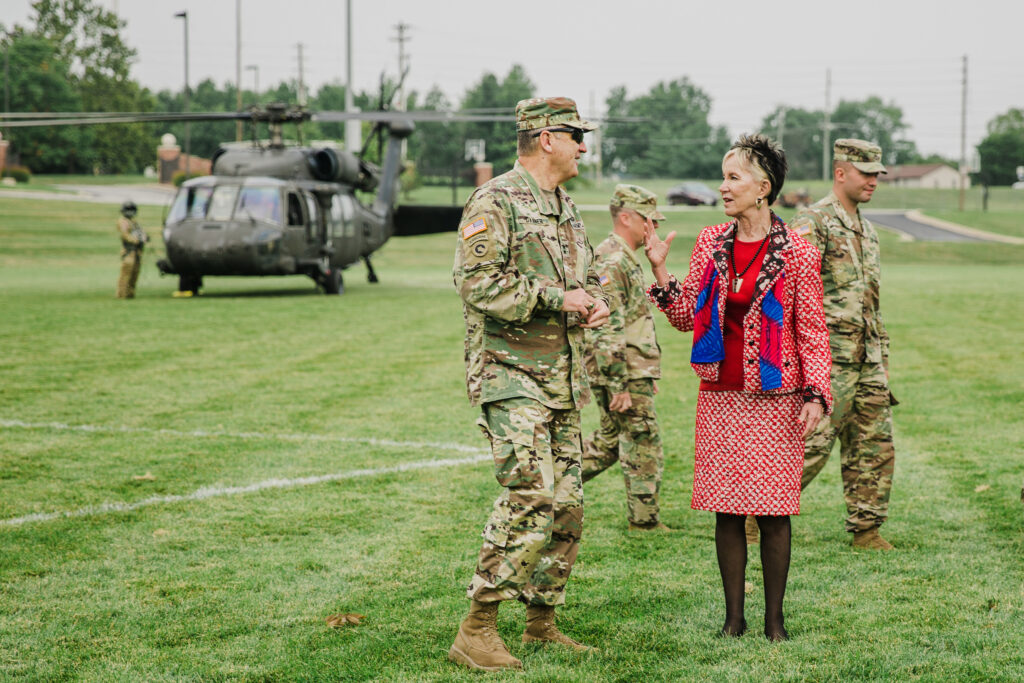
I expect us to continue to set the bar in terms of being innovative, like offering online degree programs before others, or creating the LEAD program –which was nationally recognized by NPR and several national newspapers. WWU sets the bar in being extraordinary by offering programs like EQS, ASL, Cybersecurity, and Show-Me GOLD, and in being flexible, with our online options and availability to working professionals. I see a University leading the way in 2050 in offering a college experience that continues to set us apart substantially from our peers. It is exactly this kind of thinking that has allowed William Woods to thrive for 150 years! I want to see the William Woods community continue to take closely calculated risks designed to progress us into the future. In my years as President, I have ended each opening welcome to the faculty and staff with ‘The greatest risk you take is if you take no risk at all.’
